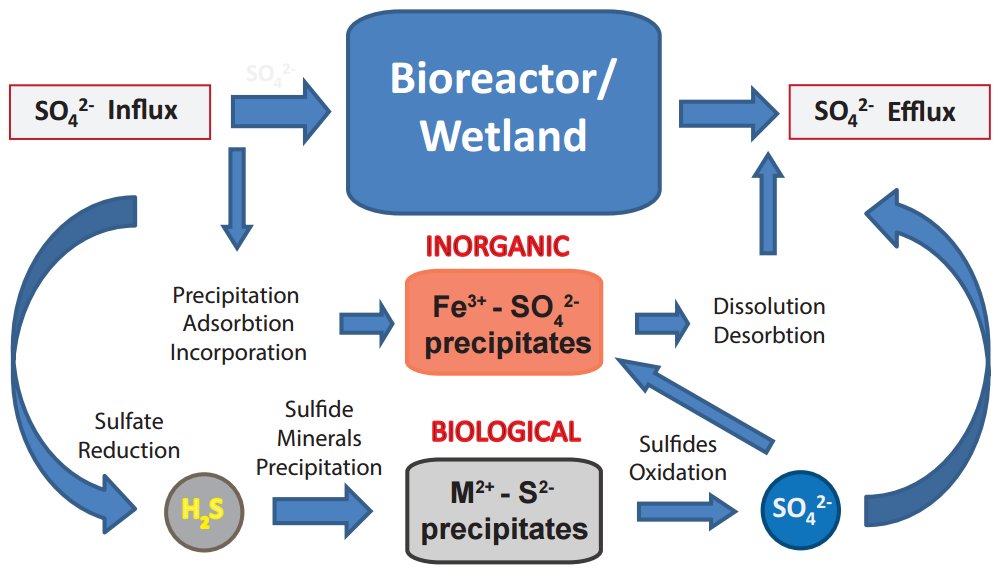Sulfate, the main dissolved contaminant in acid mine drainage (AMD), is ubiquitous in watersheds affected by coal and metal mining operations worldwide. Engineered passive bioremediation systems (PBS) are low-cost technologies that remediate sulfate contamination by promoting (1) precipitation of sulfate-bearing compounds, such as schwertmannite and gypsum; and (2) microbially-mediated sulfate reduction (BSR) to sulfide with subsequent precipitation of sulfide minerals. In this study, chemical and sulfur isotopic data are used to infer multiple pathways for sulfate sequestration in the Tab-Simco PBS. By simultaneously monitoring sulfate concentrations and δ34SSO4 values at four sampling points across the PBS, we (1) identified that the organic layer within the bioreactor was the primary site of BSR processes contributing to sulfate sequestration; (2) observed seasonal variations of BSR processes; (3) estimated that initially the BSR processes contributed up to 30% to sulfate sequestration in the Tab-Simco bioreactor; and (4) determined that BSR contribution to sulfate sequestration continuously declined over the PBS operational lifetime. Together, our results highlight the utility of combining geochemical and microbial fingerprinting techniques to decipher complementary processes involved in sulfur cycling in a PBS as well as the value of adding the sulfur isotope approach as an essential tool to help understand, predict, prevent and mitigate sulfate contamination in AMD-impacted systems.

